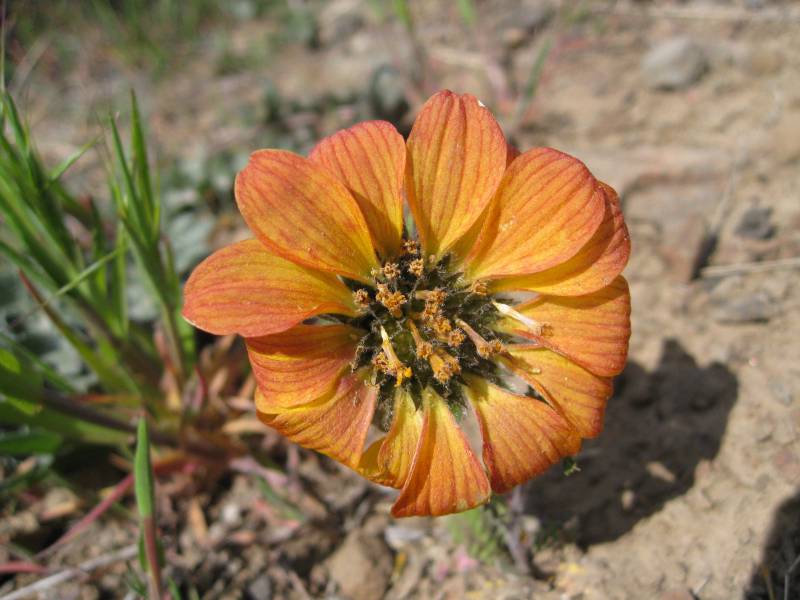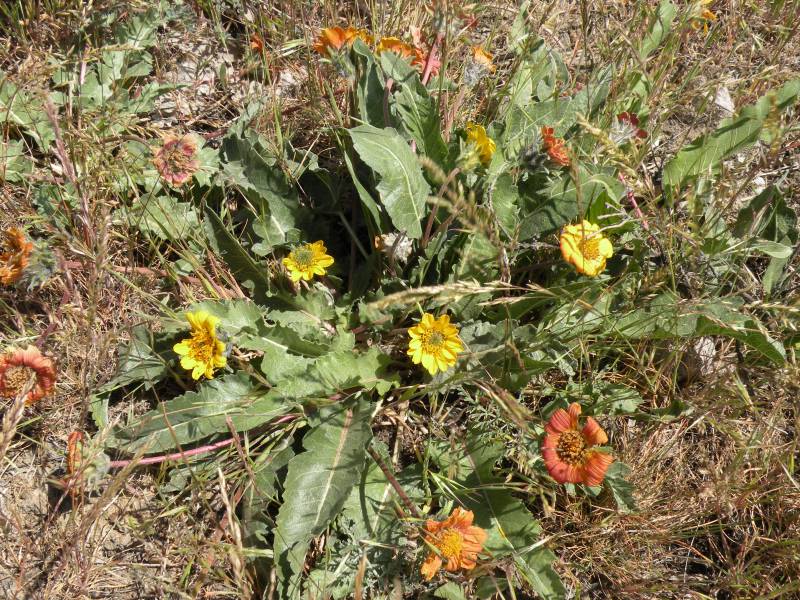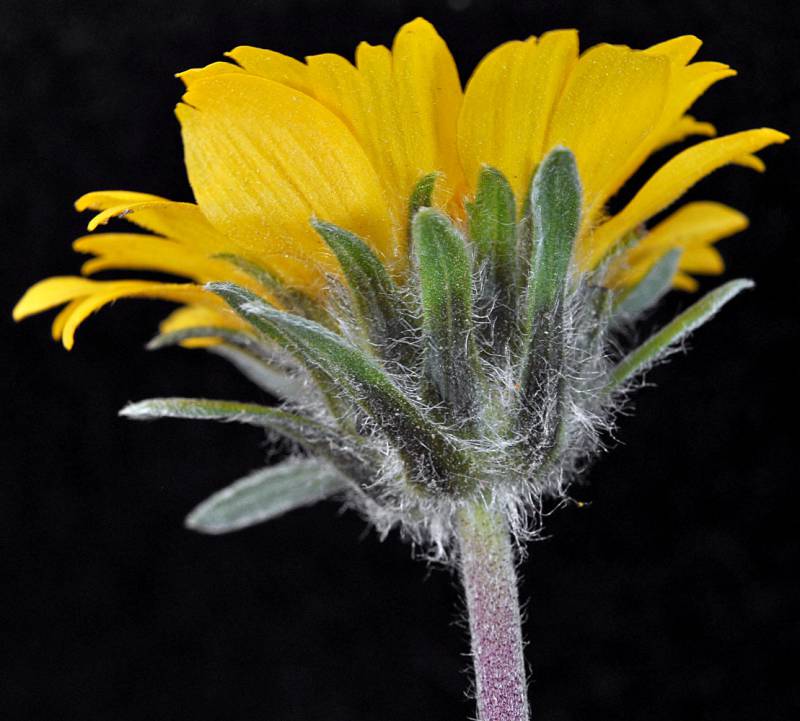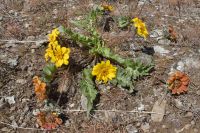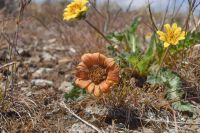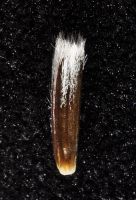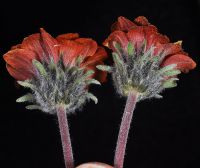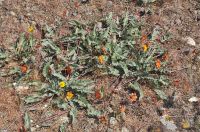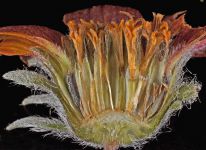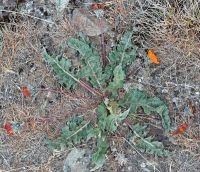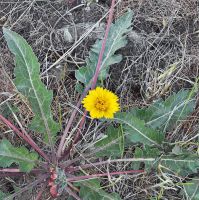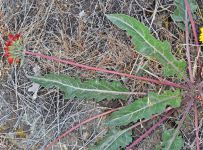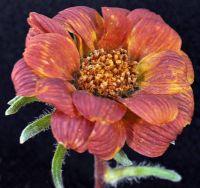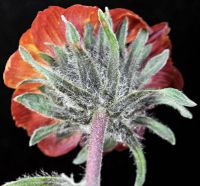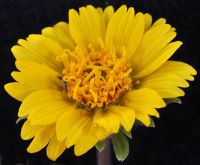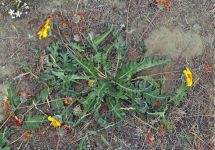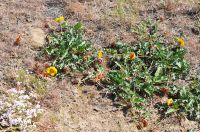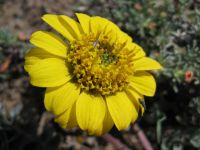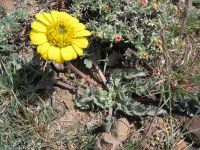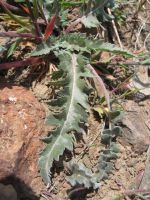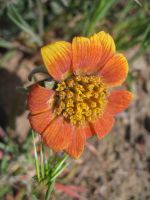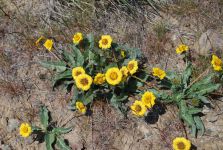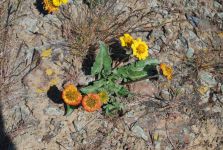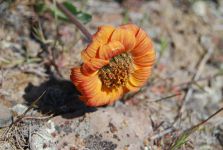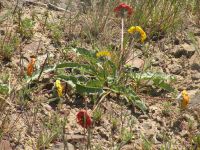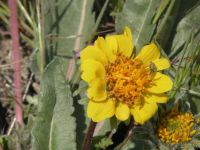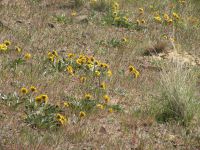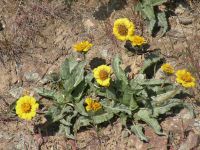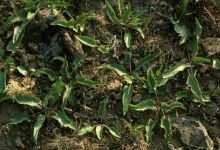Distribution: Occurring east of the Cascades crest in south-central Washington; south-central Washington to northeastern Oregon.
Habitat: Dry, rocky slopes at low elevation.
Flowers: April-May
Origin: Native
Growth Duration: Perennial
Conservation Status: Not of concern
Pollination: Bumblebees, bees, flies, butterflies, beetles, wasps
Perennial from a simple crown, 0.6-3 dm. tall.
Basal leaves petiolate, the blade deltoid with rounded teeth or nearly pinnatifid, 3-20 cm. long and 1-10 cm. wide, with short, appressed hairs aligned in one direction, prominately netted-veined; stems with a pair of linear leaves near the base.
Heads small, the rays 1-2.5 cm long but often 1 cm. broad, usually 10-16, becoming roseate in age.
Achenes with appressed hairs aligned in one direction.
The short, broad ray flowers that become orange-red with age are unique to this species of Balsamorhiza.
Publication: Bot. Gaz. 56: 478. 1913.
PNW Herbaria: Specimen records of Balsamorhiza rosea in the Consortium of Pacific Northwest Herbaria database
WA Flora Checklist: Balsamorhiza rosea checklist entry
OregonFlora: Balsamorhiza rosea information
E-Flora BC: Balsamorhiza rosea atlas page
CalPhotos: Balsamorhiza rosea photos

